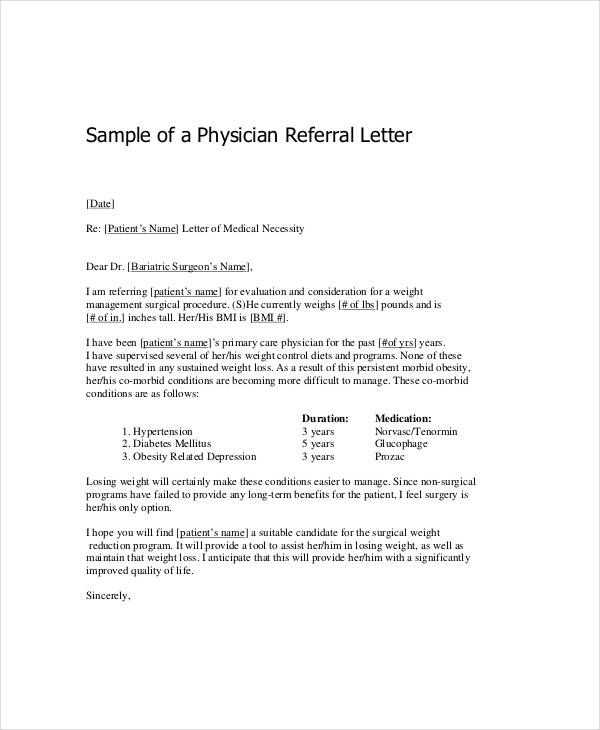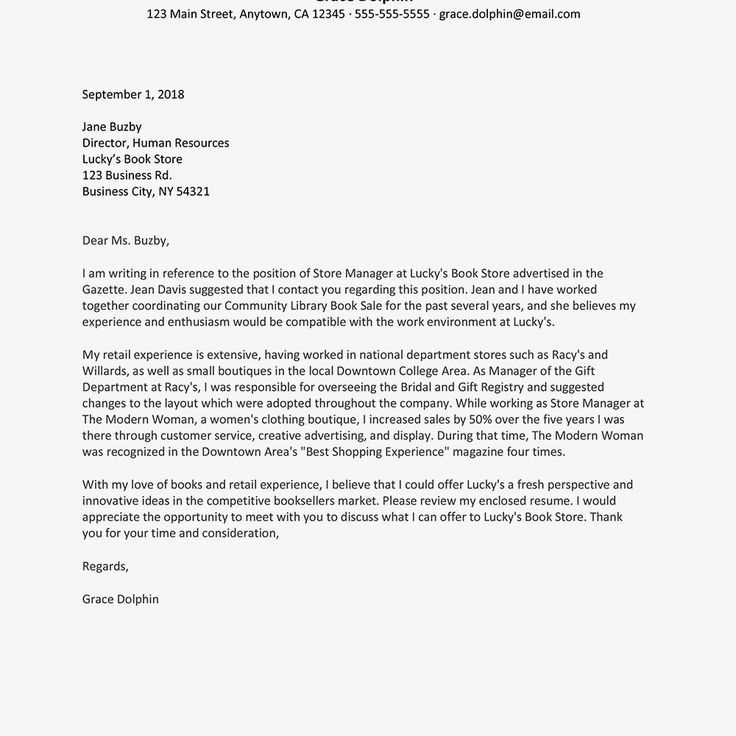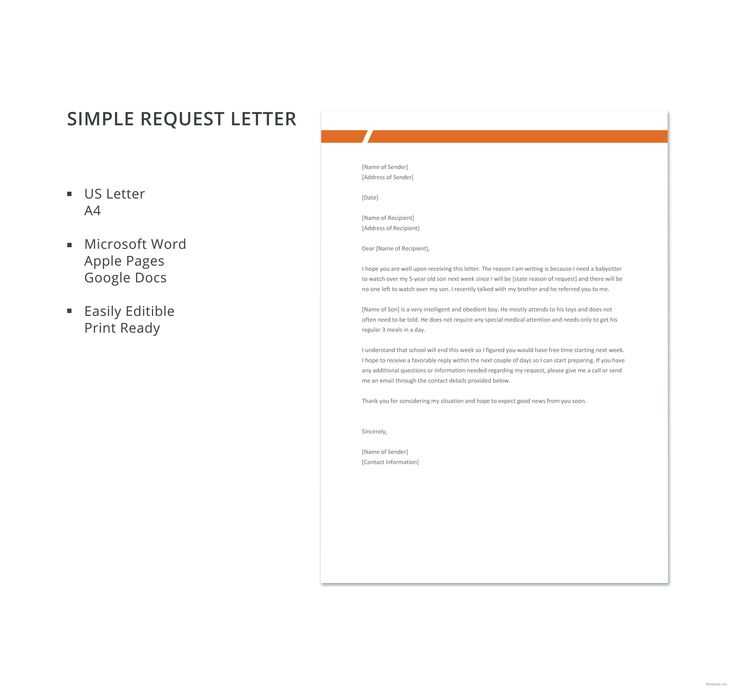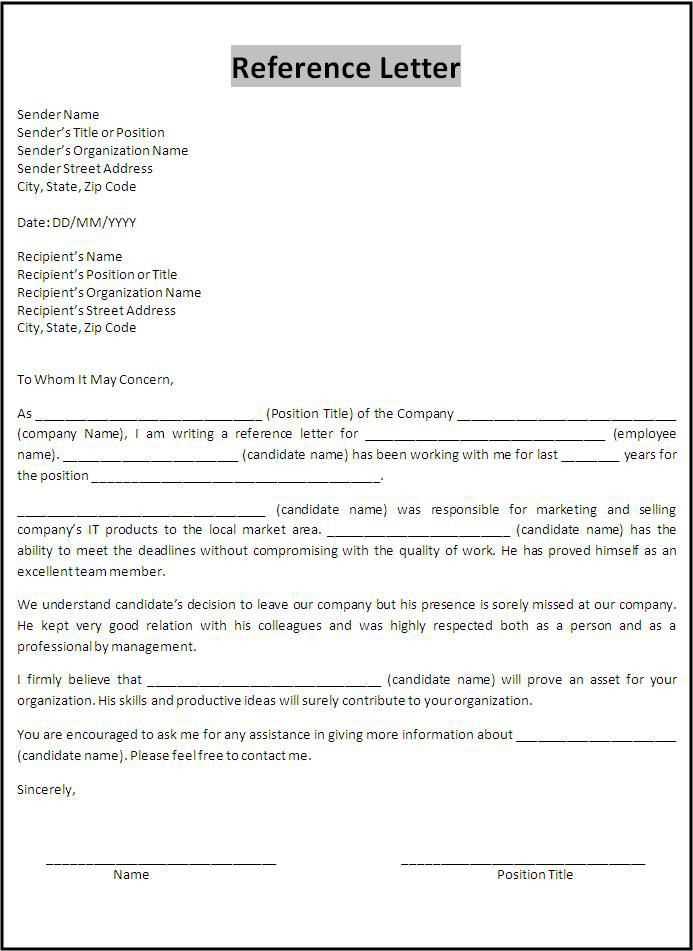Referral Letter Template for Easy Customization

When needing to vouch for someone’s abilities, writing a formal document can greatly impact their opportunities. Such a document serves as a valuable tool to provide a structured and professional recommendation that clearly conveys your endorsement. This guide will assist you in crafting an effective and well-organized document for any occasion, whether it’s for employment, academic purposes, or other professional needs.
Key Elements of an Effective Recommendation
To ensure your endorsement has the desired impact, certain elements are crucial. A strong document should always contain the following:
- Introduction: Briefly state your relationship with the individual and your credentials for making the recommendation.
- Specific Examples: Include relevant experiences or accomplishments that showcase the person’s skills and qualities.
- Conclusion: End with a clear statement of support, emphasizing your confidence in the individual’s abilities.
Personalizing the Document
While using a general structure can be helpful, it is important to tailor your document to the individual’s specific strengths and the purpose of the endorsement. By highlighting unique qualities or achievements, you create a more authentic and compelling case for the person you are recommending.
Common Mistakes to Avoid
There are several pitfalls to watch out for when writing this type of document:
- Vagueness: Avoid generic statements that don’t provide clear evidence of the person’s abilities.
- Excessive Length: Keep your document concise, focusing only on the most important points.
- Lack of Structure: Ensure the document is well-organized, with logical progression from one section to the next.
Formatting and Presentation Tips

Formatting plays an important role in the overall readability and professionalism of the document. Consider the following guidelines:
- Clear Headings: Use headings to break up sections and make it easier for the reader to follow.
- Professional Tone: Maintain a formal yet approachable tone throughout the document.
- Consistent Style: Ensure consistent formatting, such as font style and size, for a polished look.
When to Use a Structured Approach
While personal notes and informal references are useful, using a more structured approach is recommended for formal situations. Whether for job applications or academic pursuits, a well-structured document can provide the clarity and professionalism required to make a lasting impression.
Creating a Persuasive Recommendation Document

When recommending someone professionally, a well-crafted document plays a key role in showcasing their abilities and qualifications. To make a strong impact, it’s essential to know the core elements of a recommendation and how to effectively present them. By understanding the right structure and how to customize your content, you can ensure that your endorsement stands out in any professional context.
Key Elements of a Strong Recommendation

To effectively recommend someone, your document must include several key sections. These should include:
- Introduction: Provide a brief overview of your relationship with the person and your capacity to offer a recommendation.
- Skills and Achievements: Highlight the individual’s strengths with specific examples that demonstrate their qualifications.
- Conclusion: End with a strong statement of support, making it clear why the individual would be a valuable addition to any team or program.
Choosing the Right Approach
When selecting a structure for your recommendation, it’s important to consider the purpose of the document. Whether it’s intended for a job opportunity or academic program, the structure should align with the expectations of the recipient. A well-suited format will allow your content to be easily digestible and persuasive.
Personalizing Your Recommendation
While there are general structures to follow, personalizing your recommendation is crucial. Tailor the content to reflect the individual’s unique qualities and the specific opportunity at hand. Customization adds authenticity and demonstrates a deeper understanding of the person’s capabilities, making your endorsement more impactful.
Avoiding Common Mistakes
There are several common errors that can undermine the effectiveness of your recommendation:
- Being Too Vague: Generic language doesn’t effectively highlight the individual’s strengths.
- Excessive Length: A long-winded recommendation may lose the reader’s attention. Be concise and focus on the most relevant information.
- Lack of Structure: Disorganized content can be confusing. A logical flow ensures clarity.
Formatting for Professionalism
Proper formatting enhances the readability and professionalism of your document. Follow these tips:
- Use Headings: Break your document into clear sections, making it easy for the reader to navigate.
- Maintain a Professional Tone: Keep your language formal and respectful throughout.
- Consistent Style: Ensure uniform font size, type, and spacing for a polished appearance.
When and Why to Use a Structured Approach
In formal settings, using a clear and structured approach is highly recommended. Whether the document is for a job application, academic pursuit, or professional endorsement, a well-organized recommendation can provide the necessary support to strengthen the individual’s chances and leave a lasting impression on the reader.